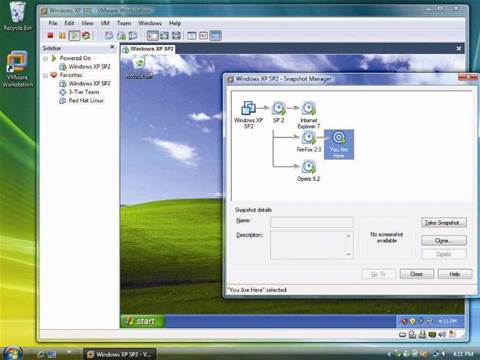Infoplex managing director, Sean Kaye, believes that VDI gives organisations a viable alternative to Citrix but that at the current stage of development neither seems to be winning out ahead of the other.
“Virtualisation has more potential upside than a traditional Citrix solution, which probably explains why Citrix is so bullish on virtualisation themselves.” Nevertheless, he believes that VDI’s main problem is that it lacks a killer application.
“VDI hasn’t yet made a dramatic splash because it isn’t really driving a particular benefit. We can talk about the speed of provisioning, but if an organisation has a good SOE and a process for deploying that across its fleet then provisioning is slightly offset as a key win. The desktop replacement vendors selling thin clients also haven’t really provided a compelling experience either, although it is getting there with Wyse. Desktop virtualisation is disruptive, but it hasn’t yet reached a point where it is impacting the current market – it will come though.”
So if pretty much everyone agrees about the possibilities for VDI, what are the drivers towards implementation, but more importantly what are the inhibitors preventing its take up? Obeidullah believes the basic drivers for desktop virtualisation come down to making the corporate desktop environment more flexible. “VDI offers a way for organisations to avoid the regular desktop refresh cycle, which costs a lot of time and money. It can also help organisations meet environmental targets, particularly around reducing power consumption. Desktop virtualisation can enable businesses to replace traditional workstations with thin-client devices that utilise significantly less power.”
The Green IT credentials of VDI are also put forward as a compelling driver by VMware senior product marketing manager APAC, Andre Kemp. “As carbon trading becomes a reality for corporate Australia, virtualisation is the only technology that delivers cold, hard savings on Green IT emissions – power consumption; really the only technology that delivers immediately is virtualisation.”
Having the option to work from home, even just a couple of days a week, is cited as a compelling reason to choose one company over another for many knowledge workers, yet providing this flexibility presents security challenges for the IT establishment. As a result, some commentators see VDI as an important facilitator of new more flexible ways of working.
“Increasing the flexibility and portability of the corporate desktop environment will also lead to further changes in working arrangements with options such as working from home,” said Obeidullah. “Another trend that is gaining momentum is allowing employees to bring their own laptops to work. With the entrance of Gen-Y and the Millenniums into the workplace, organisations will need to be able to accommodate very tech savvy staff. Allowing people to use their own laptops, whether they are Windows, Mac or Linux, and then leveraging desktop virtualisation to deliver the corporate desktop would help engage and retain the next generation of workers.”
This view is echoed by Kaye. “Social change will play a part in VDI. Computers are integrating into people’s lives more deeply. Imagine a scenario where I have my MacBook Pro on which sits my iTunes, personal photos and tools for updating my blog. Wouldn’t it be great if I could bring my MacBook Pro into the office, my AirPort network adapter picks up a Wi-Fi network and it knows my MAC address? The Wi-Fi registers my MacBook Pro onto a secure VLAN and because the network can’t control the security posture of my computer, it decides to send me a VM of the company’s standard Vista SOE with Office 2007.
Let’s talk about VDI
By
Darren Baguely
on Jul 22, 2008 10:33AM

Page 2 of 3 | Single page
Got a news tip for our journalists? Share it with us anonymously here.
Partner Content

How Expert Support Can Help Partners and SMBs Realize the Full Value of AI
_(21).jpg&h=142&w=230&c=1&s=1)
Empowering Sustainability: Schneider Electric's Dedication to Powering Customer Success
.jpg&h=142&w=230&c=1&s=1)
New Microsoft CSP rules? Here’s how MSPs can stay ahead with Ingram Micro

MSPs with a robust data protection strategy will achieve market success

Beyond the box: How Crayon Is Redefining Distribution for the Next Era







.jpg&w=100&c=1&s=0)










